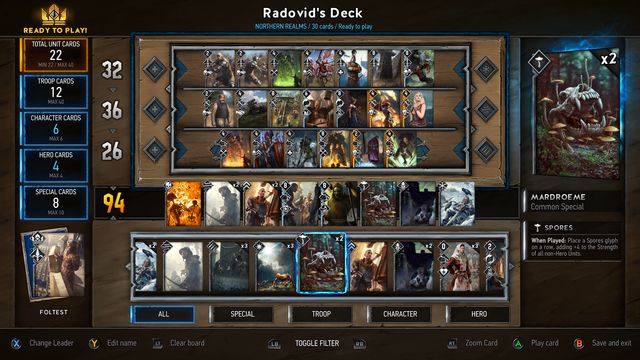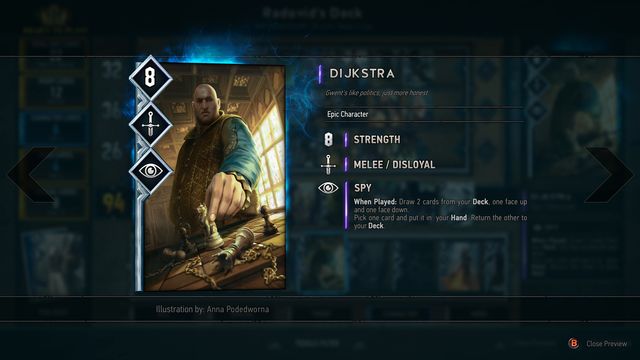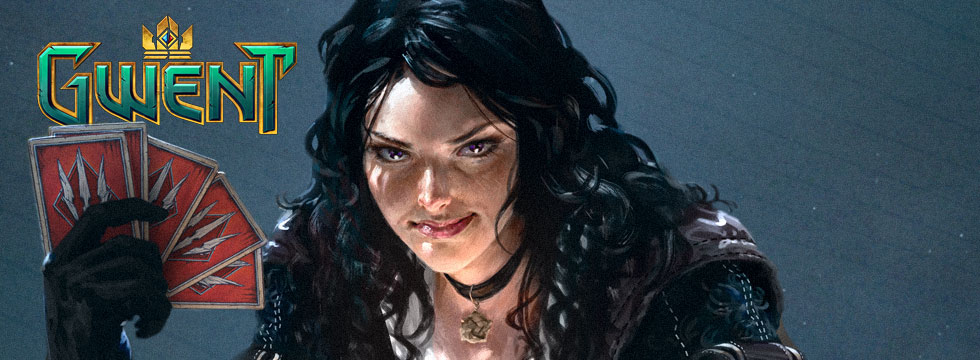author: Kristian Smoszna
Gwent Hands-on – we've played it and we love it!
Somebody could say that the card game from The Witcher 3 is not suited for multiplayer, but that somebody would be a liar. The standalone Gwent is not only pretty, but also complex and fun. It can really stir the genre.
This article was written prior to the game's release.
This text was based on the PC version.
Did you like Gwent in The Witcher 3? If the answer is “yes”, you can believe me when I say that you’re absolutely going to fall in love with it this fall. CD Projekt Red isn’t going to give us a mere “Gwent minus The Witcher”. Gwent is going to be a genuine video game, offering not only the option to compete against other players online (at last!), but also providing a 10-hour long campaign for the lone wolves: isometric perspective, new plot, map exploration, and fully voiced dialogues – you will hear your old friends from The Witcher, but there will also be many new characters. As if this wasn’t enough, the game is going to be totally free.

I would’ve lied if I said that I was expecting so many additional elements in a card game which, at the bottom, isn’t all that complicated – at least when compared to similar games. But CD Projekt Red didn’t go the easy way, and created a game which surprises you all the time. The first thing that draws attention is the beautiful visual layer – the artwork is fantastic, and from the technical standpoint, the screens are very legible and manage to explain all the nuisances of the game.
The standalone Gwent is all about novelty
Gwent in this new, standalone version has been thoroughly modified, and only the core of the game is similar to what we’ve seen in the Wild Hunt. The devs say that beginners should be able to comprehend the rules in fifteen minutes, but having played a couple rounds I’ve got no doubt – getting really good at this game will take some time, even to the Gwent masters of Passiflora. The changes concern the leader cards, which control the armies, as well as regular cards, which often have unexpected new bonuses. Triss Merigold card, for example, didn’t have any effects in The Witcher 3. Now it has two: Scorch, destroying the strongest card of the opponent, and the “Clear Weather” skill, neutralizing all currently active weather effects – of these abilities, one can be chosen by the player.

Avallac’h is still a spy card, but its value was changed from 0 to 12, which means that playing this card will permanently reinforce the opponent’s deck (contrary to his card in Witcher 3). The mechanics of spies were severely changed altogether. Those cards provided a huge advantage to Northern Kingdoms and Nilfgaard decks in the Wild Hunt, giving two additional cards at the expense of reinforcing the opponent’s deck. Now, the players can chose from two cards, among which only one is face-up.



